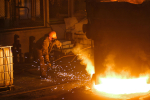My thoughts in The Chemical Engineer on how Japan is taking an early lead in hydrogen:
https://www.thechemicalengineer.com/features/japan-taking-a-lead-in-hydrogen/
Extract:
If you think the energy situation in the UK looks challenging, just consider that of Japan. With double the population (126m vs 65m) crammed into brightly-lit, air-conditioned mega-cities, plus a vast manufacturing base to feed, total energy consumption is the world’s fifth largest. But Japan’s domestic natural resources (coal, oil, gas) are practically non-existent.
From the 1960s onwards, Japan bet large on nuclear, constructing over 50 reactors. Its first plant at Tokai was, in fact, supplied by Britain’s GEC. Then, in 2011, disaster struck as a massive tsunami overwhelmed the Fukushima Daiichi facility. With public confidence shattered, the entire atomic fleet was shut down. Whilst some plants are slowly returning to service following work to bolster their safety cases, energy-hungry Japan remains the world’s largest LNG importer and the third largest coal importer.
With a change of direction essential, Japan has identified hydrogen as the answer, both for transportation and in power generation. Via the 3E+S (Energy Security, Economic Efficiency, Environment + Safety) principles enshrined in its 2014 Strategic Energy Plan, Japan intends to showcase hydrogen at the 2020 Tokyo Olympics. Some 40,000 hydrogen fuel cell vehicles (FCVs) and 160 filling stations are to be ready for the Games, leading to 800,000 by 2030. As we’re about to see, Japan’s plans are certainly ambitious – and not without challenges.

